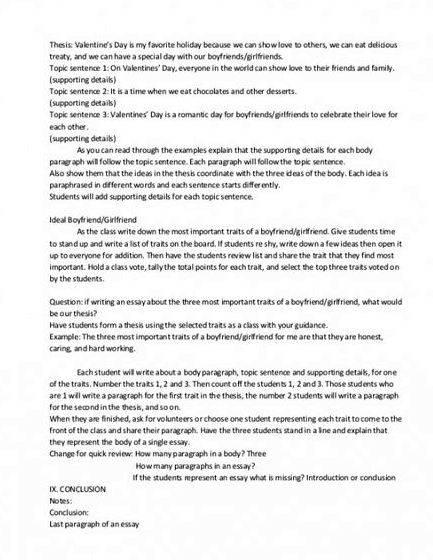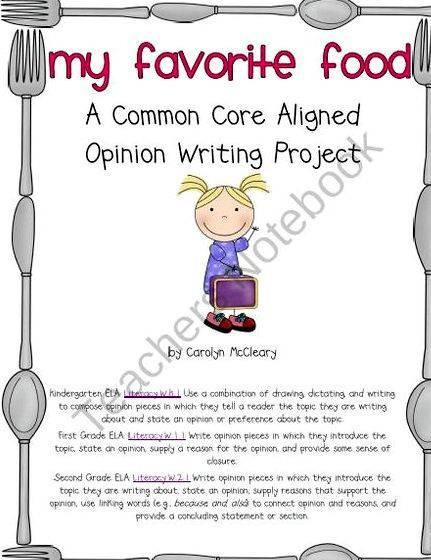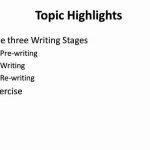Overview
Students will explore writing food reviews as part of a larger unit of study on review writing. Ongoing formative assessment will guide the way in helping the teacher and students study, evaluate, and write their own reflections of literature and the world around them. Check out Angela’;s supporting book list: Books for Writing Food Reviews .
Objective
- Students read a wide range of print to build an understanding of texts, of themselves, and of the cultures of the United States and the world.
- Students conduct research on issues and interests by generating ideas and questions, and by posing problems. They gather, evaluate, and synthesize data from a variety of sources (e.g. print, artifacts, people) to communicate their discoveries in ways that suit their purpose and audience.
- Understand the importance of written reviews in our literate lives.
- Use self-reflection and formative assessment to improve quality of writing.
- Respond both orally and in writing observations from a genre study.
- Test products out before writing a review for an audience of peers.
Materials
Directions
Part 1: The Appetizer
Assessment Note. Use part one for “kid-watching” observation, and do not worry about having students complete a written review independently just yet. Think of this as time to gather a starting point for your students on what they need for future instruction.
- Inform students on the planned genre study and why you are opening up the year with it as your first study (e.g. helpful for reading response journal, book selection assistance from each other, high interest, builds onto larger studies for the year, etc.). Also let your students know that you will break reviews up into three main categories: food, movies, and books.
- Pass out copies of the sample food review (PDF) with one or two post-it notes. Ask students to write a quick response on what they noticed while reading the piece.
- Have students turn to a partner and share their written notes. Take this time to determine what students are and are not looking at. Listen for the language used as well. Don’t be discouraged if the talk is simple and broad (e.g. “It was good.”). You will change that with your modeling, discussions, and ongoing feedback, but you have to know where to start first.
- Ask students if they can determine the purpose behind the piece shared. Why did the author write it? Who is it for? Allow time for each student to turn to a partner first before calling on individual students for a classroom discussion.
- Post a blank chart on the wall that follows the format of the sensory observation chart (PDF).
- Using the gradual release model (to, with, and by) begin a conversation on what you noticed as a teacher of writers. Take the “watch me” approach by modeling your thoughts out loud as you read the article again and discuss what you are noticing before, during, and after the read. Your ability to talk models what students will soon be looking for at the end of the study, so be descriptive as possible.
- Ask students to use the back of their sheet to write down why it would be beneficial to use sensory images with food reviews. Collect this as well as the post-it notes.
- Reflection. Take a moment to record your observations of students’ language used, reflection response concerns, post it notes, etc. Use this for future instruction.

Part 2: Creating and Selecting the Main Course — Cooking Something Good Together!
Assessment Note. Depending on how the first session went you will want to model the above approach with several pieces until you feel confident that your students are grasping what to look for in a review. Continue modeling your thoughts out loud as an exemplar for students. I also recommend sharing your personal reflection notes with the class as a method of informative assessment for your students.
- Announce that you have enjoyed looking at food reviews in class together and depend on these types of reviews outside of school often. Share any reviews you have read that inspired you to visit a unique location that would have been overlooked without a compelling review. What did you like about the place? How accurate was the reviewer? Share your experience with the class in a way that models the genre of food review.
- Announce to your class that they are not quite ready to “cook” by themselves, but that you believe they are ready to cook together with your help (to-with-by approach).
- Read a local newspaper food review to your class. Select a location that is popular (and inexpensive) for many of your students. Ask for their opinions of the article itself (not their own, just yet).
- Tell the class, “We have been studying food reviews, and many of you have eaten here before. Do you think, if we wrote one together, we could create a review better than this one?” If students seem hesitant, reassure them that you will be writing this together as a class.
- Use chart paper to brainstorm ideas. Use the sensory chart (PDF) for organization and narrow your focus to one or two items served at the restaurant.
- Once your brainstorming session has been completed, number your ideas in a logical order for writing a draft.
- Write the review together, modeling the process of crossing out, circling spelling that you are unsure of, etc. Depending on the time you have, you may complete the writing solely or you may share the pen with your students.
- Ask students to critique the writing with a self-reflection sheet (PDF).
Part 3: Time for Desert! — Hands-On Research
Assessment Note. If you use the workshop method, use this time to individually discuss and assist students with review writing. One on one conferencing is beneficial for the teacher and the student. Keep suggestions simple, such as, “I like how you are. I am noticing that. ” Offer one area of improvement with a plan to help the student succeed.
Also, it is important to take reading capabilities into consideration to writing abilities. You can only write as well as you can read. Providing reviews that are just outside of your student’s writing capabilities are ideal. Completing a running record on a child will aid you in selecting appropriate review articles as well as acceptable writing goals.
- Tell students that published food reviewers have to complete “research” on the foods and restaurants they write about. Inform students that although you would like to take them out to a restaurant of choice, you are hoping a taste session in class will do.
- Pass out two samples of different types of food. You can keep it simple with two types of chips or integrate some geography with state declared treats.
- Ask students to eat and think like a food critique. You may want to ask students to eat the food in silence so they can fully appreciate and think about their sensory observations.
- Post your sensory observation chart and tell students that you know they are ready to create some reviews on their own.
- First, ask students to reflect on what they have learned by writing down tips they have learned. Have students share that with a partner before discussing as a class.
- Invite students to incorporate these suggestions into their writing and let the writing begin. You may want to use a descriptive food word list (PDF) for some more support.
- Take this time to read the notes your students just wrote down. Use this informal assessment as a tool to who you need to work with in depth. You may want to work with a few students one on one or pull a small group of students to the floor for a mini-session. Consider modifying the assignment for students that are not ready to write independently (e.g. pairing up with a partner).
- Invite a few students to share their work. Ask the student if they would mind receiving some positive and helpful feedback. Share your observations with the class.
Part 4: Time to Clean Up — Ready to Look Neat and Pretty
Assessment Note. Writing rubrics can be a great resource for assessing your students’ growth. I often create a rubric with the help of my class and allow a student and teacher rating with room for feedback. Although written feedback takes time, I have noticed that if you give quality feedback in the beginning, your need to write longer notes decreases as the year goes. Many authors recommend a balance of rubric use. Be careful not to overuse them as your only tool of assessment.
- Inform students that you have read through both the tips they created as well as their personal reviews. Tell students that although you are pleased with the individual improvement of writing, you believe it can be strengthened some more. This may be a good time to share your experiences with revision and editing (e.g. this article for myself!). Discuss how a care for grammar aids your readers for understanding and engagement. In my case, I have an editor that helps make those final edits and revisions, but I owe it to her and my readers to take care with grammar and conventions.
- Pass out a review rubric (PDF) that combines all of the tips and suggestions discussed in class. Tell students that they are accountable for these components as they have been looking at them in detail.
- Pass back the reviews from the previous session along with a copy of the review rubric (PDF).
- Model revision through the previous class created piece used for part two or use a food review student sample (PDF) for discussion. Use the rubric as a guide for improvement. What’s missing? What can be taken out?
- Invite students to use the rubric to improve their previous selection.
- Later on in the day, invite students to swap papers with a partner and use the rubric for further recommendations.
- Allow students the time to create a final version of the taste-tasting review or a new food review of choice. The review rubric will be used for formal assessment.
- Publish food reviews in a class newsletter and send it home to parents and friends.
- Invite students to share their pieces out-loud for author’s share time.
Optional: End this lesson with an international food tasting celebration!
Supporting All Learners
Interest plays a critical role in this study, so evaluate your students’ reactions to certain topics and authors. A simple thumbs up/thumbs down approach works. If one particular author or establishment seems to interest your students more than another, take the opportunity to really narrow in your study.
Support your not there yet students with an opportunity to work with a parent at home, present orally through labeled pictures, or to share with one partner rather than the entire class. Use your on-going assessments to pull small groups or individual students for a one on one session.
Lesson Extensions
- Incorporate photograph by encouraging students to eat, photograph, and write about a restaurant they ate at for their review.
- Ask students to review food at home as a unique homework assignment.
- Invite students to compare two food items or restaurants, as reviewers do sometimes.
- Send the reviews to your local newspaper for publishing.
- Incorporate an international flair with a food tasting event from around the world.
Home Connection
We have a weekly newsletter and updated web site that contains all of our class happenings. A majority of my students have internet access at home, so I provide some of the online resources we view in class as an at home activity. Reviews will also be printed up for each student to take home to their family. Parents will be asked to support inquiry experiments of different food products in the home.
Assessment Awareness. Consider educating parents through your newsletters on the importance of time and formative assessment. Students need time to refine what they have learned in class, and parents appreciate learning how you differentiate and modify your plans for their child through formative assessment.
Assignments
- Using the gradual release of responsibility model, allow your students to show growth throughout the unit of study. Heavier consideration of learned skills will be placed on final versions after time has been given to experiment with conventions, style, and layouts.
- Provide flexibility in your schedule. If your students take the interest somewhere not planned, be open to shifting reviews. E.g. Students prefer to write about their favorite food item rather than the chips you provided.
Evaluation
- Does the student writing sound authentic? In other words, does it sound like they really have an opinion they want to share with you?
- As a whole, what does your class present as a strength and weakness? Use this information to further your lessons and areas of assessment.
Assess Students
- Observation of language used at the beginning and end of the unit. Has it improved?
- Various responses on post-it notes, self-reflection sheet, and tips learned in class.
- Small group instruction and one on one conferences
- Peer review
- Review rubric with an option for student and teacher rating, as well as an area for written feedback.
- For a comprehensive look at assessment, read Assessing Writers, Assessing Writing (PDF) by Steve Peha of Teaching That Makes Sense, Inc.
1995-2008 by Teaching That Makes Sense, Inc. Used by permission.
For more free teaching materials visit ttms.org.
Part of Collection:





 My reading and writing autobiography
My reading and writing autobiography My writing process introduction to linguistics
My writing process introduction to linguistics Nebular hypothesis supporting evidence in writing
Nebular hypothesis supporting evidence in writing Jimmy nolen chicken scratch writing
Jimmy nolen chicken scratch writing My writing center aubg mail
My writing center aubg mail






